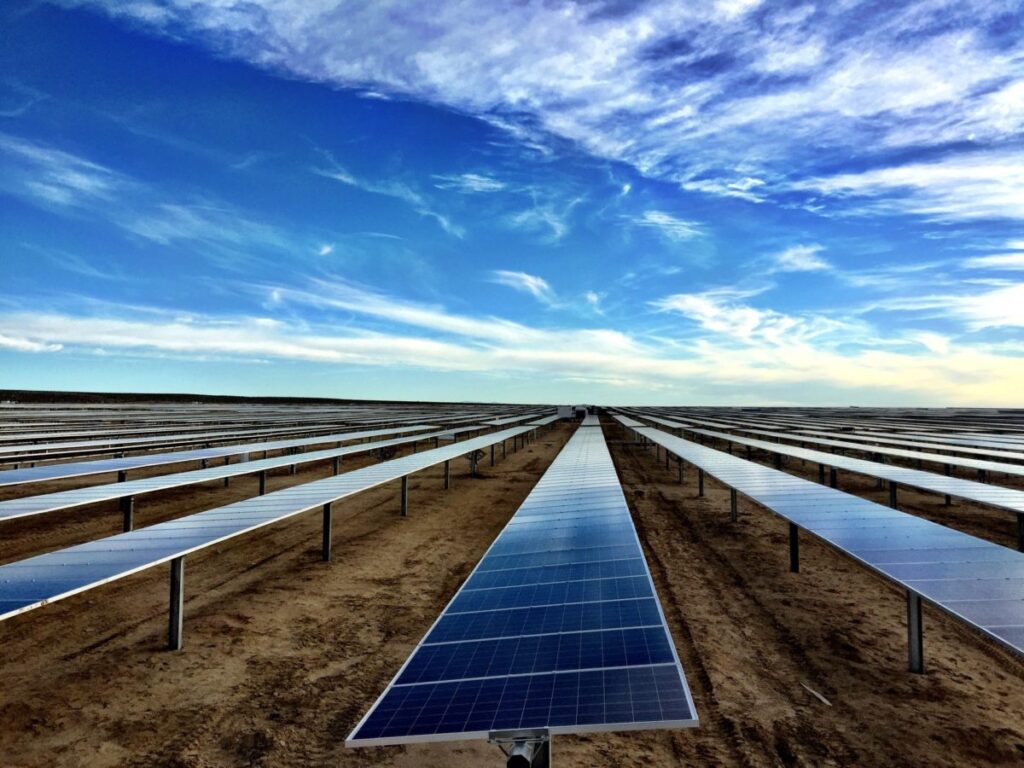About 9.7 GW of large-scale PV set for 2021 delivery in US market

Across the United States, more than three dozen solar projects with nameplate capacities of at least 100 MW are set to enter service in 2021. The Texas oil patch is on track to host the largest of them.

The Texas oil patch is hosting what could be the largest solar installation to be added in 2021.
The 420 MW Permian Energy Center is under construction and set for delivery in mid-2021, according to data from the Federal Energy Regulatory Commission (FERC) and the Energy Department’s Energy Information Administration. The figures include projects that are at least 1 MW in size.
For the country as a whole, more than three dozen solar projects with nameplate capacities of at least 100 MW are either under construction or have received regulatory go-aheads and are slated to enter service sometime in 2021.
Orsted is developing the largest of them all on 3,600 acres in Andrews County, Texas. The site is northwest of Midland and lies in the heart of West Texas’ Permian Basin oil and natural gas field. The Permian solar plant will include more than 1.3 million PV panels as well as a 40 MW, one-hour battery energy storage system. Solar modules are being supplied by Jinko Solar and JA Solar.
Two 300 MW solar projects in Ohio and Wisconsin are the next-largest facilities expected to enter service next year, according to FERC data. Hecate Energy Highland is being developed in Highland County, Ohio, east of Cincinnati. Hecate Energy is a Chicago-based solar and energy storage developer. The 300 MW facility has received regulatory approvals, as well as a power purchase agreement, and is slated to enter service in December 2021.
Badger Hollow Solar Farm is being developed by Chicago-based Invenergy and is located in Iowa County, Wisconsin, west of the state’s capitol, Madison. Work is underway and that facility also is slated to enter service in December 2021.
More than 9.7 GW of solar capacity is expected to be completed in 2021, according to the FERC data. Roughly one-third of that capacity is located in Texas. The state’s 15 projects average 195 MW in size. All totaled, the database counts more than 180 projects nationwide that have a 2021 completion date. Their average nameplate capacity is just under 54 MW.
The figures also show that slightly more than 6 GW is solar capacity is set to enter service by the end of this year. The more than 300 projects have an average nameplate capacity of just under 20 MW.
For 2021, electric utilities are developing or building just over 1 GW of solar capacity. The largest of these is the 139 MW Robins Air Force Base solar project, developed by Georgia Power near Macon. The $200 million project was approved by state regulators in May 2017 as the sixth large-scale solar project to be undertaken by the utility on behalf of the United States military. The Robins AFB facility is the largest single solar project to be constructed by Georgia Power to date and is slated to enter service in March.
Farther south, Florida Power & Light has six 74.5 MW solar projects that are expected to enter service in the Sunshine State this coming April. FERC lists the projects as Rodeo Solar Center, Orange Blossom Solar Center, Palm Bay Solar, Pelican Solar Center, Discovery Solar Center and Sabal Palm Solar Center.
Duke Energy Florida is developing a handful of solar projects with a total of nearly 300 MW of capacity; expected completed dates vary through 2021. And Tampa Electric is developing the Durrance solar project in Polk County, Florida. Durrance is Tampa Electric’s fourth phase of solar expansion, and is part of an effort that brought nine projects and more than 572 MW online between 2018 and 2020. The latest Durrance phase is scheduled to be completed in January.
Through 2023, Tampa Electric will have invested more than $1.8 billion in 1,255 MW of solar projects. When these projects are all online, about 14% of the utility’s energy will be solar-generated.

